Module 8 – Nutrition

LLM Online
©Arlene R. Taylor, PhD
Module 8 – Nutrition
What you eat clearly impacts not only your risk of developing cognitive disturbances but affects potential longevity.
—Norman Relkin, MD
To Begin
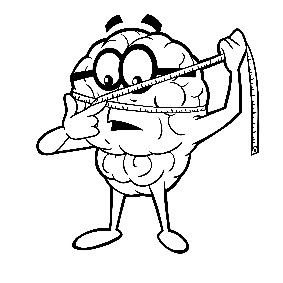 Weigh yourself in your underwear or clothes that you will wear each week on the same scales—no belt, shoes, sweater, or jacket.
Weigh yourself in your underwear or clothes that you will wear each week on the same scales—no belt, shoes, sweater, or jacket.- Measure your waist around the level of your belly button.
- Calculate your Body Mass Index using the BMI chart. Use your height in centimeters.
- Record data on the Weekly Comparison form (please print form).
- Write in your own goal on the Daily Goals form (please print form).
- Post the Daily Goals form where you can see it easily. Record your data each day.
Put good food into your brain each day—you are what you eat.
—Daniel G. Amen, MD
Overview
- In the long term, dieting does not work. Period. Short term, dieting—especially fad and radical—can result in the loss of a few pounds, but within about three years most people gain it all back, often as fat rather than muscle tissue and sometimes more than they lost to begin with. Experiments with mice at the Albert Einstein College of Medicine show that when neurons are starved, these nutrition-hungry brain cells begin to eat parts of themselves to send out hunger distress signals. As Steven Magee put it, “You have to feed the brain.”
- Prudent and balanced “intermittent fasting” has been shown to enhance cardiovascular function, sleep, digestion, cell repair, and management of one’s weight.
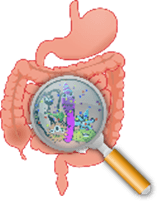 It gives the gastrointestinal system a break, allowing it to have rest periods rather than continuously work around the clock 24/7 trying to digest food delivered to it all hours of the day and night. It can also reduce the risk of inflammation, believed to underlie many types of chronic diseases, illnesses, and the process of aging.
It gives the gastrointestinal system a break, allowing it to have rest periods rather than continuously work around the clock 24/7 trying to digest food delivered to it all hours of the day and night. It can also reduce the risk of inflammation, believed to underlie many types of chronic diseases, illnesses, and the process of aging.
- Not all plant-based food choices are healthful. A recent study led by Demosthenes Panagiotakos evaluated what participants ate—either healthful or unhealthful plant-based foods in relation to cardiovascular disease.
Healthful was defined as a higher intake of whole grains, vegetables, legumes, fruits, and nuts. Unhealthful consisted of high consumptions of sweetened drinks, juices, potatoes, sweets, and refined grains. Compared with males, the likelihood of developing cardiovascular disease amongst females was much higher when they snacked on unhealthful plant-based foods. However, a female’s risk for cardiovascular disease was reduced more impressively than males by eating healthful plant-based foods.Ingesting proper nutrients can have an almost immediate impact on brain cells and brain functioning.
—Jean Carper
- Highly sugared foods and beverages can trigger a blood-sugar high in the brain, usually followed by a dramatic low. Much like a rollercoaster, this fluctuating pattern of glucose highs and lows can be deadly for many brain functions while also causing low-grade inflammation.
 Studies have shown that people who regularly consume large amounts of added sugar may have poorer memories and lower brain volumes than those who consume less sugar. A study of more than 4,000 people found that those with a higher intake of sugary beverages like soda had lower total brain volumes and poorer memories on average compared to people who consumed less sugar.
Studies have shown that people who regularly consume large amounts of added sugar may have poorer memories and lower brain volumes than those who consume less sugar. A study of more than 4,000 people found that those with a higher intake of sugary beverages like soda had lower total brain volumes and poorer memories on average compared to people who consumed less sugar.
There is compelling data that Alzheimer’s is deeply influenced by lifestyle choices we make every day, such as, what we eat, how often we exercise, the quality of our sleep and how we respond to stress.
—Padmaja Patel, MD
 Reminder: Drink a glass of water. View the Educational Video. Stand and walk in place for at least a portion of the video to increase blood flow to your brain.
Reminder: Drink a glass of water. View the Educational Video. Stand and walk in place for at least a portion of the video to increase blood flow to your brain.
Science in a Nutshell
- Food is a fast way—although often an unhealthy way—to self-medicate. Food can trigger the Brain Reward System (BRS) to release a cascade of substances that help you feel better, temporarily.
 Just as with tobacco, alcohol, street drugs, and sex—the BRS likes them all. The substances released, dopamine or adrenalin, for example, can be addicting. As David S. Ludwig points out, rather than compulsively counting and tracking calories, concentrate rather on what, when, and how much you eat. One secret to help maintain your weight in an optimum range is cutting out refined carbohydrates.
Just as with tobacco, alcohol, street drugs, and sex—the BRS likes them all. The substances released, dopamine or adrenalin, for example, can be addicting. As David S. Ludwig points out, rather than compulsively counting and tracking calories, concentrate rather on what, when, and how much you eat. One secret to help maintain your weight in an optimum range is cutting out refined carbohydrates.
| Calories: tiny creatures that live in your closet and sew your clothes a little bit tighter every night. —Daffynition |
- Food provides the raw nutrients required by the brain and body to sustain life. Micronutrients provide enzymes, vitamins, minerals, and antioxidants that help keep the brain and body healthy. Macronutrients provide calories in the form of carbohydrates (carbs, for short), proteins, and fats.
 One gram of carbs contains 4 calories as does one gram of protein. One gram of fat contains more than double that: 9 calories. Unfortunately, carbs have gotten a bad name. There are healthy and beneficial carbs and some that represent the other side of the coin. The same could be said of proteins and fats. Those that are higher in quality are, of course, healthier.
One gram of carbs contains 4 calories as does one gram of protein. One gram of fat contains more than double that: 9 calories. Unfortunately, carbs have gotten a bad name. There are healthy and beneficial carbs and some that represent the other side of the coin. The same could be said of proteins and fats. Those that are higher in quality are, of course, healthier.
Longevity and wellness is linked in large part to your choices related to these three macronutrients—carbs, proteins, fat—plus when you eat, how much you eat, how fast you eat, and the environment in which you eat.The idea that Alzheimer’s is entirely genetic and unpreventable is perhaps the greatest misconception about the disease.
—Gary Small, MD
- Studies by Paul Thompson PhD, UCLA Professor of Neurology, evaluated the brains of overweight and obese study participants as compared with the brain of normal-weight individuals.
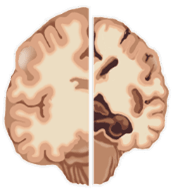 The results showed that the brains of overweight research participants showed 4 percent less brain tissue and looked 8 years older than the brains of normal-weight participants. The brains of obese study participants showed 8 percent less tissue and looked 16 years older (right side of drawing) than the brains of participants who were within normal weight ranges (left side of drawing).
The results showed that the brains of overweight research participants showed 4 percent less brain tissue and looked 8 years older than the brains of normal-weight participants. The brains of obese study participants showed 8 percent less tissue and looked 16 years older (right side of drawing) than the brains of participants who were within normal weight ranges (left side of drawing).
Being obese is like being 20 years older than you really are. It does more damage to your quality of life, causes more chronic medical conditions, and incurs more healthcare expenditures than either smoking or alcohol abuse.
—Roland Sturm

Reminder: Drink a glass of water to hydrate your brain.
Matter of Fact
1st
Carbs. Carbohydrates have gained a bad reputation. They are not all created equal. Just as differing types of fuel have differing octane ratings, carbohydrates have differing levels of nutrition. Bottom line? 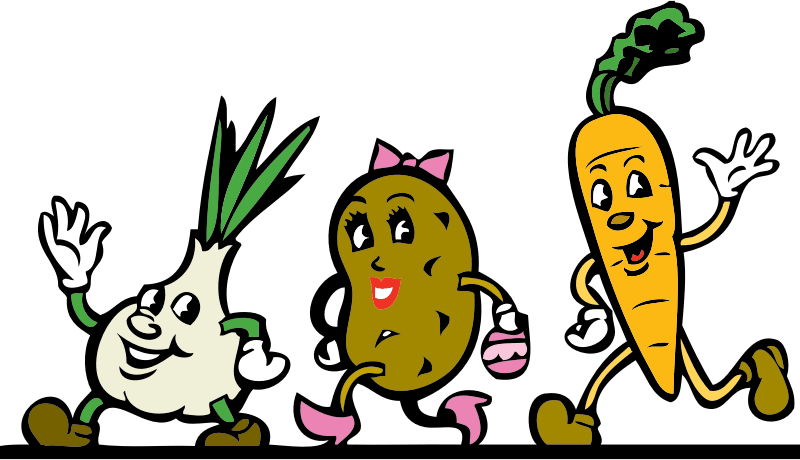 The quality of the carbohydrate is key. Some carbohydrates are simply more nutritious. Period. Complex carbs found in fresh vegetables and whole fruits, whole grains,
The quality of the carbohydrate is key. Some carbohydrates are simply more nutritious. Period. Complex carbs found in fresh vegetables and whole fruits, whole grains, 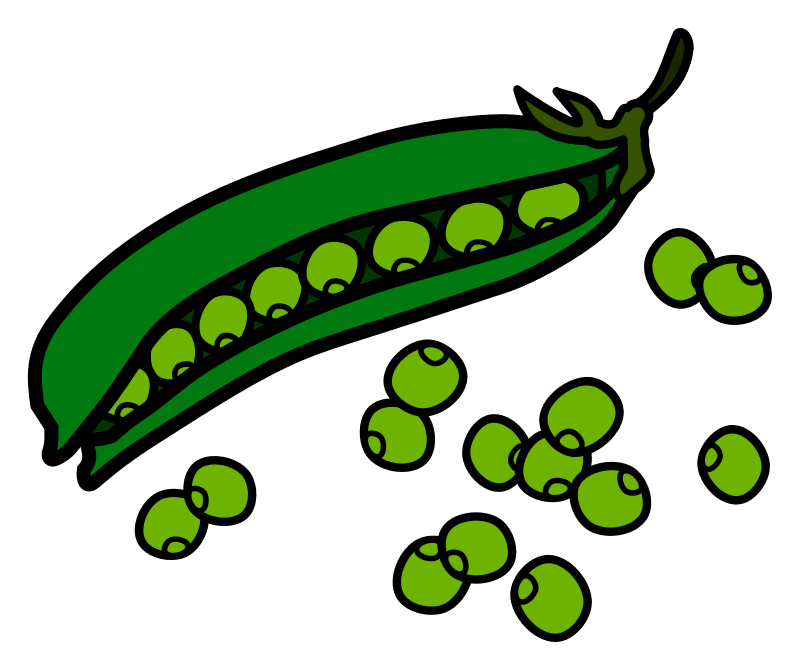 raw nuts and seeds, and legumes, are healthier, especially those that contain fiber. Aim for the healthier complex carbs, i.e., relatively low on the Glycemic Index and Glycemic Load lists. Eat these in as natural a state as possible.
raw nuts and seeds, and legumes, are healthier, especially those that contain fiber. Aim for the healthier complex carbs, i.e., relatively low on the Glycemic Index and Glycemic Load lists. Eat these in as natural a state as possible. 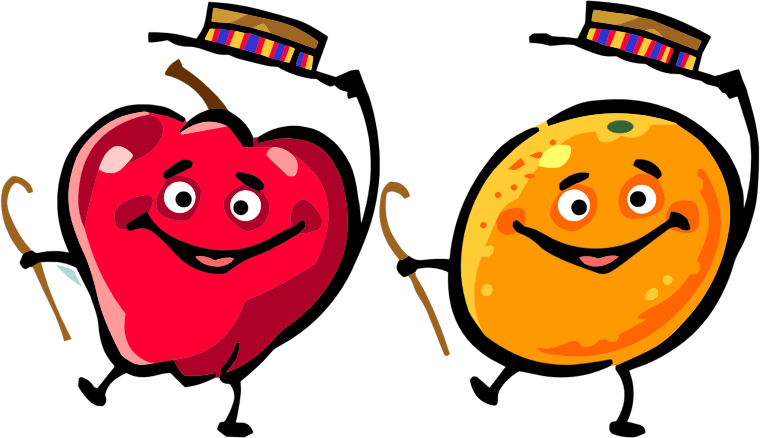 Minimize simple carbs from sugar, white flour, candy, desserts, highly refined and/or processed foods.
Minimize simple carbs from sugar, white flour, candy, desserts, highly refined and/or processed foods.
Although the body can use proteins, fats, or carbohydrates for energy, the brain’s thinking cells reportedly prefer glucose from carbs almost exclusively as a source of energy.
| It is more important to eat some carbohydrates at breakfast because the brain needs fuel right away, and carbohydrate is the best source. —Andrew Weil, MD |
Since there is no room to store glucose in the brain, it depends on receiving glucose from the blood supply. During periods of intense mental processing—the brain requires higher amounts of glucose. Studies on all types of people have shown improved mental ability after a meal high in carbs, which raises concerns about the long-term impact on the brain from “low-carb” menus.
You can never, ever, use weight loss to solve problems that are not related to your weight. At your goal weight or not, you still must live with yourself and deal with your problems. You will still have the same husband, the same job, the same kids, and the same life. Losing weight is not a cure for life.
—Dr. Phil McGraw
2nd
Fats. Both the brain and body need some fats. However, there are healthy and less healthy types. All types of fat add more than twice the calories per gram—compared to carbs or protein. Therefore, it is wise to use even the healthier types of fat judiciously. Unhealthy fats raise cholesterol levels that may increase a risk of cardiovascular disease.
- Saturated fats—fat molecules that are hydrogenated or “saturated” with hydrogen molecules.
 Primary sources include meat, poultry, full-fat dairy products, coconut oil/cocoa butter and palm oil/palm kernel oil.
Primary sources include meat, poultry, full-fat dairy products, coconut oil/cocoa butter and palm oil/palm kernel oil.
- Trans fat—partial hydrogenated, although they do occur naturally in some foods in small amounts. Legally, a serving of food containing less than 0.5 grams of trans fat can be labeled as 0 grams. Check labels for the term “partially hydrogenated.”
 Reportedly, many restaurants and fast-food outlets use trans fat to deep-fry foods because oils with trans fat can be used many times in commercial fryers.
Reportedly, many restaurants and fast-food outlets use trans fat to deep-fry foods because oils with trans fat can be used many times in commercial fryers.
Most fats that have a high percentage of saturated fat or that contain trans-fat are solid at room temperature. For example, beef fat, pork fat, butter, coconut oil, shortening, and stick margarine. Healthier fats include monounsaturated fatty acids, polyunsaturated fatty acids, and omega-3 fatty acids.
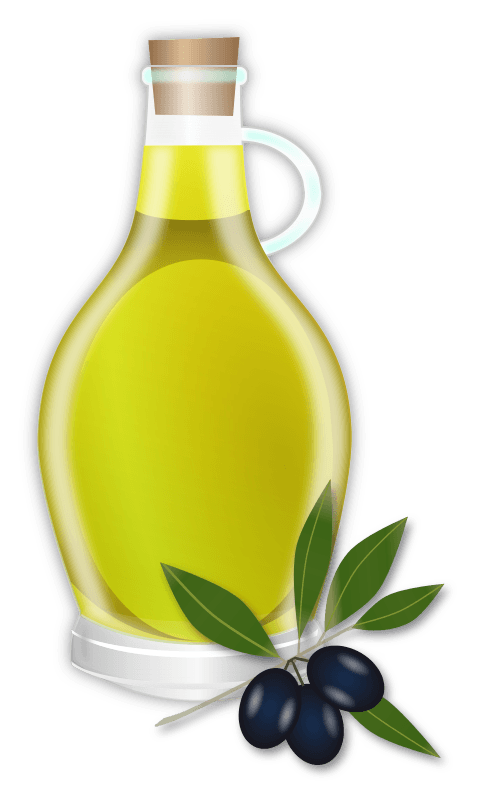 Foods consisting mostly of mono- and polyunsaturated fatty acids are found in plant-based foods such as olives, avocados, and walnuts.
Foods consisting mostly of mono- and polyunsaturated fatty acids are found in plant-based foods such as olives, avocados, and walnuts. 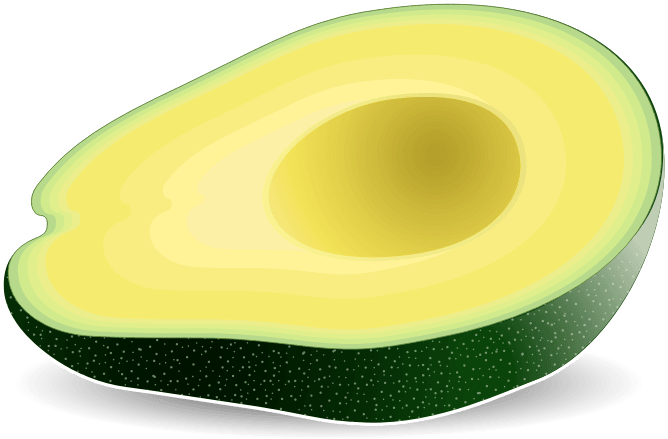 The oils from these foods are liquid at room temperature. These types of fat can improve cholesterol levels that may decrease a risk of heart disease and type 2 diabetes.
The oils from these foods are liquid at room temperature. These types of fat can improve cholesterol levels that may decrease a risk of heart disease and type 2 diabetes.
- Fish high in omega-3 fatty acids include salmon, tuna, trout, mackerel, sardines, and herring.
 Wild fish (not farmed) species are recommended. Plant sources of omega-3 fatty acids include nuts such as walnuts and butternuts, chia seeds, flaxseed (ground), and oils such as flaxseed and soybean.
Wild fish (not farmed) species are recommended. Plant sources of omega-3 fatty acids include nuts such as walnuts and butternuts, chia seeds, flaxseed (ground), and oils such as flaxseed and soybean.
- Be careful to check ingredient lists for non-fat and low-fat products. To make them palatable and maintain shelf-life, manufacturers often include salt, sugar, flour, and thickeners that add calories, making some concerned about nutritional quality and how healthy they really are.
- On average about 75 percent of the brain is fluid.
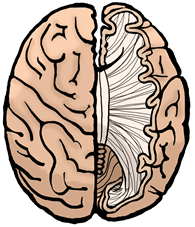 However, the solid matter in the brain is about 60 percent fat. Myelin, the whitish insulation coating of the neuronal axons is 75 percent fat (with more myelin in the right hemisphere). According to Kelly Dorfman, MS, hydrogenated oils (chemically created over a half century ago due to a shortage of butter), “are not chemically equivalent to the fats found in whole foods. The rigorous processing that oils undergo changes their chemical properties so that they contain configurations not generally found in nature. When these altered fats are consumed, the body forces them into the spots reserved for natural fats, with potentially deleterious effect.” In other words, hydrogenated oils were never meant to be part of brain tissue.
However, the solid matter in the brain is about 60 percent fat. Myelin, the whitish insulation coating of the neuronal axons is 75 percent fat (with more myelin in the right hemisphere). According to Kelly Dorfman, MS, hydrogenated oils (chemically created over a half century ago due to a shortage of butter), “are not chemically equivalent to the fats found in whole foods. The rigorous processing that oils undergo changes their chemical properties so that they contain configurations not generally found in nature. When these altered fats are consumed, the body forces them into the spots reserved for natural fats, with potentially deleterious effect.” In other words, hydrogenated oils were never meant to be part of brain tissue.
Trans fat is considered the worst type of fat you can eat. Unlike other dietary fats, trans fat—also called trans-fatty acids—raises your "bad" cholesterol and lowers your "good" cholesterol. A diet laden with trans fat increases your risk of heart disease, the leading killer of adults.
—Mayo Clinic

Reminder: Drink a glass of water to hydrate your brain.
3rd
Protein. Protein is composed of building blocks known as amino acids. There are many amino acids in nature, although only 20 are utilized by the human body. Eleven amino acids the body can manufacture on its own. The other nine are known as “essential amino acids” that must be consumed through the food you eat. Your body breaks down the protein you eat into individual amino acids. Then it rearranges them into unique proteins required by the body. These are utilized in many ways. For example, in:
- Building muscle tissue (about 20 percent protein).

- Forming neurotransmitters that facilitate movement of information across synapses, the spaces between neurons.
- Producing hormones such as insulin and growth hormone that help to coordinate biological processes among cells, tissues, and body organs.
- Working as enzymes to carry out most of the thousands of chemical reactions that take place inside cells and assist with building new molecules by following genetic information stored in DNA.
- Creating antibodies in the immune system that bind to harmful organisms and help protect the body.
You can obtain essential amino acids from foods known as “complete proteins” because they contain all nine essential amino acids.
- Animal-based complete protein foods include fish, eggs, dairy, lean red meat, some seafood, and poultry.
- Plant-based complete protein foods include buckwheat, which is gluten free, quinoa, edamame, and tempeh. The website www.cornucopia.org suggests minimizing use of highly processed soy products as in some meat-substitutes and Bars, especially if prepared with chemicals such as Hexane—a neurotoxic chemical solvent that is a byproduct of gasoline refining.
Many other plant foods also contain protein, including avocados, beans, grains, hemp, legumes, lentils, nuts, peas, rice, and soy.  Some foods make a complete protein when they are eaten together. For example: hummus with whole wheat pita bread; lentils, chickpeas, or beans with rice (providing a protein value on par with meat); and peanut butter with whole wheat bread.
Some foods make a complete protein when they are eaten together. For example: hummus with whole wheat pita bread; lentils, chickpeas, or beans with rice (providing a protein value on par with meat); and peanut butter with whole wheat bread.
| People eat meat and think they will become as strong as an ox, forgetting that the ox eats grass. —Pino Caruso |
A study in 2016 evaluated plant-based proteins with animal proteins and concluded: a high animal protein intake was positively associated with cardiovascular mortality, and a high plant-protein intake was inversely associated with all-cause cardiovascular mortality, especially among individuals with at least one lifestyle risk factor. Substitution of plant protein for animal protein, especially that from processed red meat, was associated with lower mortality, suggesting the importance of the source of one’s dietary protein.
https://jamanetwork.com/journals/jamainternalmedicine/fullarticle/2540540
| The food you eat can be either the safest and most powerful form of medicine or the slowest form of poison. —Ann Wigmore |
Plant sources are said to place less strain on the kidneys and liver—especially processed meat products that have been salted, cured, smoked, fermented,  or undergone other processes to enhance flavor or improve preservation. Compared with other countries, Americans are said to ingest more protein than they need. The USDA recommends 12 percent of total calories in protein. Harvard Health suggests at least 15 percent of total calories in protein. Negative consequences from eating too much protein include: weight gain; high cholesterol levels; stress to the liver, kidneys, brain, and nervous system; bloating, bad breath; fatigue, and gout, a type of inflammatory arthritis where uric acid crystals are deposited around the joints.
or undergone other processes to enhance flavor or improve preservation. Compared with other countries, Americans are said to ingest more protein than they need. The USDA recommends 12 percent of total calories in protein. Harvard Health suggests at least 15 percent of total calories in protein. Negative consequences from eating too much protein include: weight gain; high cholesterol levels; stress to the liver, kidneys, brain, and nervous system; bloating, bad breath; fatigue, and gout, a type of inflammatory arthritis where uric acid crystals are deposited around the joints. 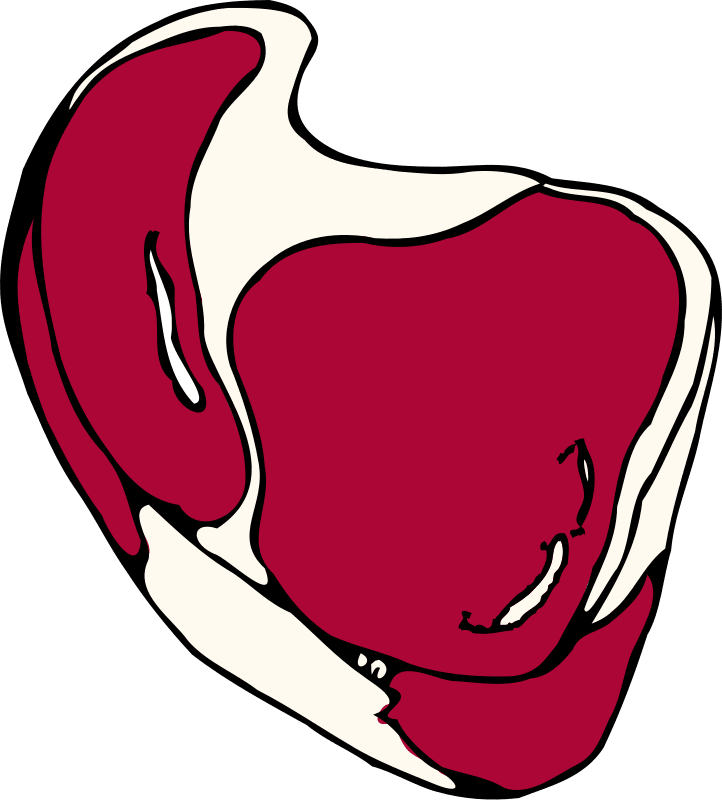 According to Mayo Clinic, gout may be triggered by foods that that are high in purines found in red meat, organ meat, and seafood. Also, from alcohol, particularly beer and hard liquor.
According to Mayo Clinic, gout may be triggered by foods that that are high in purines found in red meat, organ meat, and seafood. Also, from alcohol, particularly beer and hard liquor.
An international team of researchers led by Dr. Vered Padler-Karavani has identified a direct molecular link between consuming meat and dairy products and the development of antibodies in the blood that increase the chances of developing cancer. This may explain the higher incidence of cancer—especially colorectal cancer—among those who consume large amounts of dairy products and red meat. (https://www.sciencedaily.com/releases/2020/10/201022151749.htm)
4th
Insulin Resistance. Insulin is a powerful hormone that plays a major role in metabolism, the way cells use digested food for energy. Insulin is the key that unlocks the fat cell’s “door” to let energy enter and be subsequently stored as fat. The United States Department of Agriculture (USDA) Dietary Guidelines recommends 45-65 percent of one’s total calories should come from carbohydrates—preferably from healthier carbs. Carbs are important because they are:
- The body’s main source of fuel and can easily be used for energy by all tissues and cells. They can be stored in the muscles and liver and later used for energy.
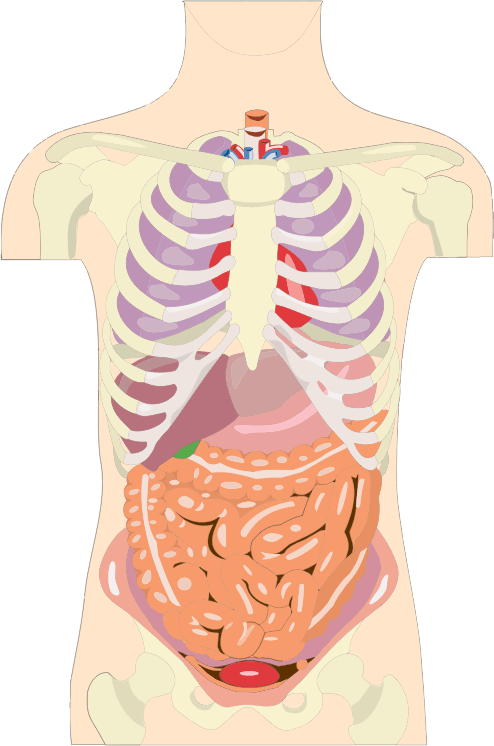
- Necessary for the brain, central nervous system, kidneys, and muscles (including those of the heart) to function properly.
- Important for gastrointestinal health and the timely and appropriate elimination of waste.
Foods with a high Glycemic Load that quickly spike blood sugar (such as simple carbs and many highly refined and processed foods) trigger a rise in your insulin level.  With continually high insulin levels, your body becomes less and less responsive to the glucose-moderating effects of insulin. To compensate, your body must secrete more and more insulin. High levels of insulin direct your body to store more of the calories as body fat. Excess insulin can increase your percentage of body fat, which can put you on the road toward eventual weight gain.
With continually high insulin levels, your body becomes less and less responsive to the glucose-moderating effects of insulin. To compensate, your body must secrete more and more insulin. High levels of insulin direct your body to store more of the calories as body fat. Excess insulin can increase your percentage of body fat, which can put you on the road toward eventual weight gain.
According to Mark Hyman, MD, skipping breakfast (or reaching for something super sugary and starchy), perhaps only snacking for lunch, and subsequently 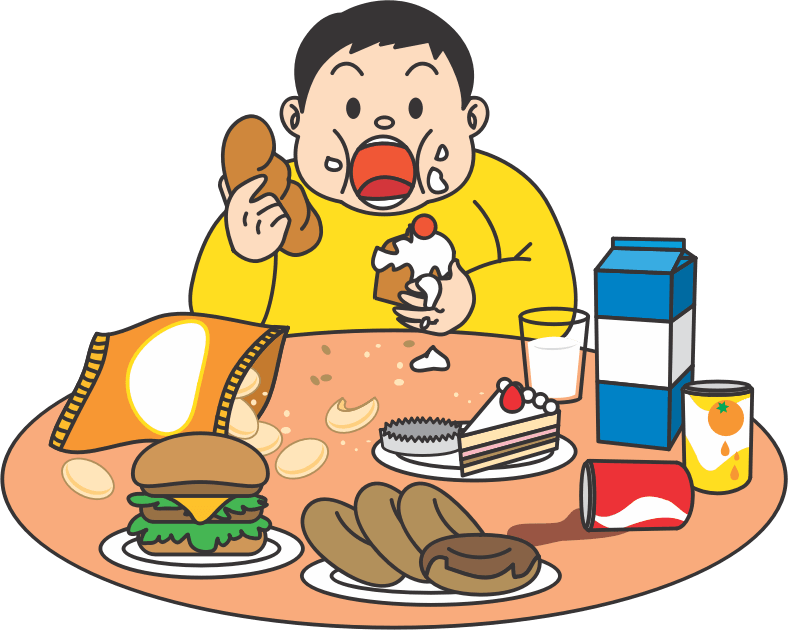 eating a huge dinner is all too common in this modern world. Unfortunately, this leads to a cascade of hormonal damage that increases dangerous belly fat and causes insulin resistance and pre-diabetes. Letting your blood sugar get out of control is the quickest way to mess up your metabolic health and keep you chronically fatigued.
eating a huge dinner is all too common in this modern world. Unfortunately, this leads to a cascade of hormonal damage that increases dangerous belly fat and causes insulin resistance and pre-diabetes. Letting your blood sugar get out of control is the quickest way to mess up your metabolic health and keep you chronically fatigued.
There is a mountain of compelling research showing that plant protein allows for slow but steady synthesis of new proteins and is the healthiest type of protein.
—T. Colin Campbell, PhD
5th
| Becoming vegan is the most important and direct change we can immediately make to save the planet and its species. —Chris Hedges |
Some researchers now suggest that the three best eating styles for brain-body health, high-level wellness, and longevity are vegan, vegetarian, and pescatarian, in descending order.
- A vegan is a type of vegetarian who does not eat any animal products.
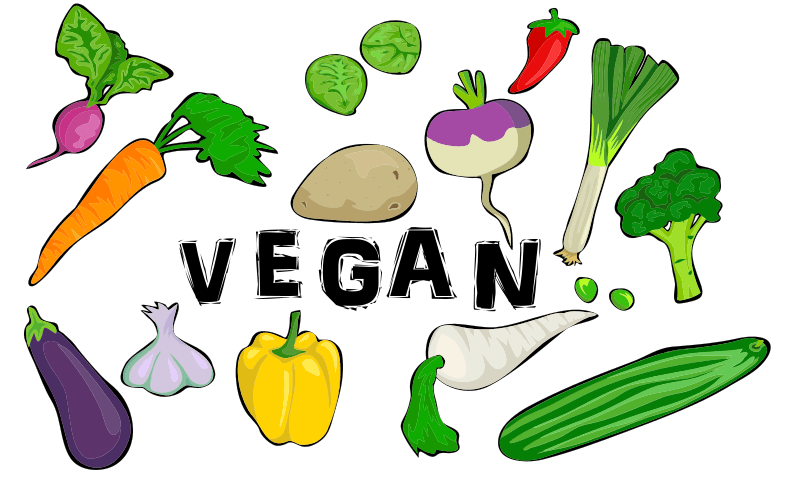 Some also have an associated philosophy that rejects the commodity status of animals and the cruelty shown to them.
Some also have an associated philosophy that rejects the commodity status of animals and the cruelty shown to them.
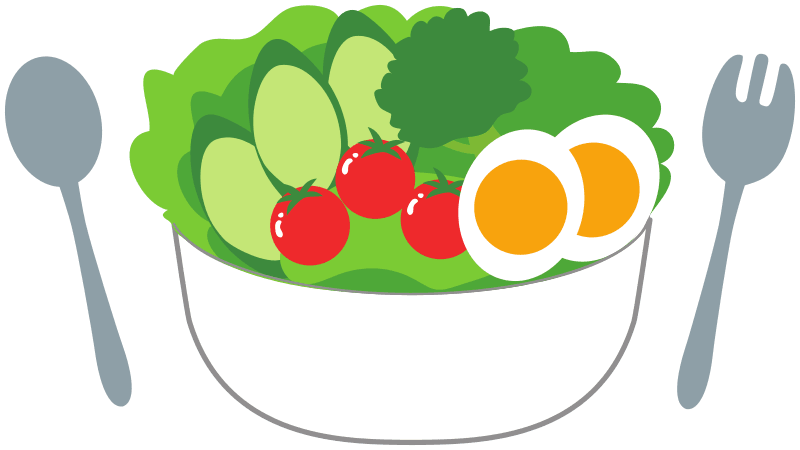 A vegetarian is an individual who does not eat meat, fish, or fowl. Some do eat animal products such as dairy, cheese, and eggs.
A vegetarian is an individual who does not eat meat, fish, or fowl. Some do eat animal products such as dairy, cheese, and eggs.
- A pescatarian (Pesco) vegetarian is a person who is a semi-vegetarian. Fish and seafood are included in their food choices.
| Animals are my friends—and I do not eat my friends. —George Bernard Shaw |
Plant-based menus are good for the human body and—good for Planet Earth, along with the creatures that call it home. Some believe that creatures know when they are going to be slaughtered. This creates stress and their bodies pour out hormones including adrenalin.  When you eat adrenalin-laced meat, you may get some adrenalin-boost momentarily. Animals fed antibiotics are believed able to pass those along to those who eat their meat. This may destroy some of the good bacteria in a person’s large intestine.
When you eat adrenalin-laced meat, you may get some adrenalin-boost momentarily. Animals fed antibiotics are believed able to pass those along to those who eat their meat. This may destroy some of the good bacteria in a person’s large intestine.
Obesity is such that this generation of children could be the first, basically in the history of the United States, to live less healthful and shorter lives than their parents.
—David S. Ludwig, MD, PhD
Children's Hospital, Boston

Reminder: Drink a glass of water. Listen to Chapter 10 of “Just the Facts.” If possible, walk around the room while you listen. At least walk in place.
6th
| Any food that requires enhancing using chemical substances should in no way be considered a food. —John H. Tobe |
Obesity. WHO has labeled obesity a world-wide epidemic. Obesity is now linked with more than 50 diseases including diabetes, cancer, and cardiovascular issues—many related to lifestyle.  Calories from low-quality foods and beverages will likely go to your waist. (What a waste!) In addition, aromatase in fat cells converts testosterone into estrogen, which can cause a plethora of problems in both males and females—problems no one wants. Avoid overeating, especially of —poor-quality foods¾such as those high in animal fat or hydrogenated oils or sugar. Minimize eating highly refined and processed foods. They can trigger hormonal imbalances, increase a risk of insulin resistance, increase visceral fat accumulation, and increase a risk for type 2 diabetes. Increase your intake of soluble and insoluble fiber, preferably from whole, intact foods.
Calories from low-quality foods and beverages will likely go to your waist. (What a waste!) In addition, aromatase in fat cells converts testosterone into estrogen, which can cause a plethora of problems in both males and females—problems no one wants. Avoid overeating, especially of —poor-quality foods¾such as those high in animal fat or hydrogenated oils or sugar. Minimize eating highly refined and processed foods. They can trigger hormonal imbalances, increase a risk of insulin resistance, increase visceral fat accumulation, and increase a risk for type 2 diabetes. Increase your intake of soluble and insoluble fiber, preferably from whole, intact foods.
| Processed foods not only extend the shelf life, but they extend the waistline as well. —Karen Sessions |
Visceral fat cells that congregate around one’s middle, do far more than just impact how clothes fit. They can disrupt hormonal secretions and the metabolism of fat and proteins that, in turn, may impact appetite, blood sugar levels, cholesterol, blood pressure, and insulin sensitivity. A larger waist measurement has been found to increase one’s risk for diabetes type 2, asthma, some forms of heart disease, and cancer as well as cancer recurrence.
Those with high amounts of belly fat are more than three times as likely to develop memory loss and dementia later in life.  There is also a correlation between belly fat and lowered levels of testosterone in both males and females, due to aromatase in fat tissue that tends to convert testosterone to estrogen). The waist measurement for average adult males should be 40 inches (102 cm) or less. For woman it should be 35 inches (89 cm) or less. However, most adults between the ages of 50 and 70 are believed to have waist measurements larger than this.
There is also a correlation between belly fat and lowered levels of testosterone in both males and females, due to aromatase in fat tissue that tends to convert testosterone to estrogen). The waist measurement for average adult males should be 40 inches (102 cm) or less. For woman it should be 35 inches (89 cm) or less. However, most adults between the ages of 50 and 70 are believed to have waist measurements larger than this.
Those who are morbidly obese are at greater risk for illnesses including diabetes, high blood pressure, sleep apnea, gallstones, GERD or gastroesophageal reflux disease, osteoarthritis, heart disease, and cancer.
—Bariatric Surgery Center, Rochester, NY
7th
Sodas. The Centers for Disease Control and Prevention (CDC) reported data for 2016 indicating that about a third of the population drinks at least one sugary soda or other sweetened drink daily—and indications are that this is increasing. Regular sodas are high in sugar and sometimes in caffeine. Sugar is a toxin to the brain: even too much glucose and fructose found in fruits can be a hazard. Harvard's T.H. Chan School of Public Health reported that a can of sugar-sweetened soda contains about 150 calories, most of which come from sugar, which can add several pounds to your frame each year—if other lifestyle changes are not made.
Blood-sugar highs—followed by lows—make one crave another “dose” of sugar. As mentioned earlier, these blood-sugar fluctuations are not good for the brain. A high intake of sugar suppresses immune system function and lowers its ability to fight against pathogenic organisms and disease. Cancer cells have been referred to as “sugar hogs”—they love sugar! Diet sodas may not contain sugar, but they are not free of health-related consequences. Artificial sweeteners confuse the brain. The sweet taste triggers the release of insulin, which interferes with this critical brain-body system. They also may trigger weight gain.
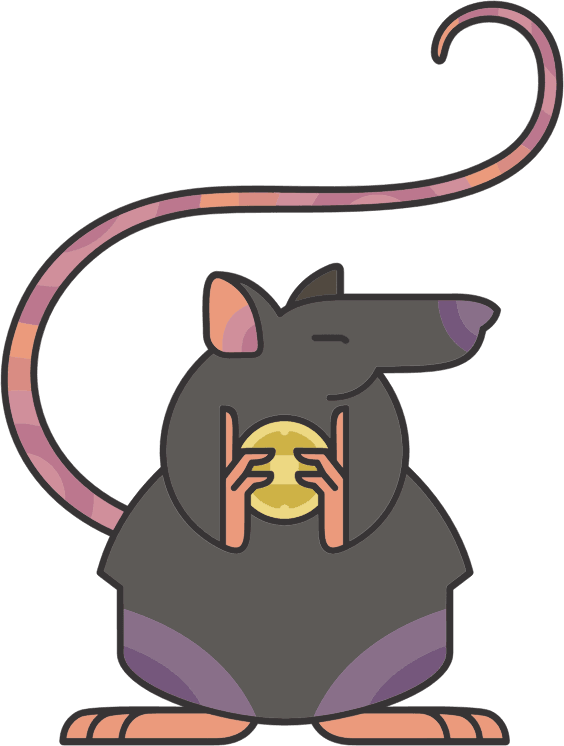 A 2010 experiment on rats found that those who were fed saccharin-sweetened yogurt ate more rat chow, gained more weight, and had a higher percentage of body fat compared with those who ate the same amount of yogurt containing glucose, a natural sugar.
A 2010 experiment on rats found that those who were fed saccharin-sweetened yogurt ate more rat chow, gained more weight, and had a higher percentage of body fat compared with those who ate the same amount of yogurt containing glucose, a natural sugar.
| An improper diet has been clearly linked with both premature aging and disease. —Deepak Chopra, MD |
A study that followed more than 400 hundred diet-soda drinkers for 10 years found that waste sizes increased 70 percent more than the waste sizes of non-consumers. Those who drank 2 or more diet sodas per day increased their waist sizes 5 times more than those who avoided diet drinks entirely.[https://healthyeating.sfgate.com/much-sugar-really-soda-4922.html]
Avoid sugary soft drinks, especially those sweetened with high fructose corn syrup. They make lab animals dum
—Jean Carper

Reminder: Drink a glass of water. Watch the short Birds & Brains video. Stand and walk in place for at least part of the video.
Practical Applications
| Avoid digging your own grave with your own knife and fork. —English Proverb |
- Food is meant to be enjoyed, chewed well, and eaten in a pleasant environment, with good portion control. It takes about 15 minutes for the brain to register satiation. Eating slowly gives food time to begin the digestive process—which starts in the mouth as food is mixed with saliva.
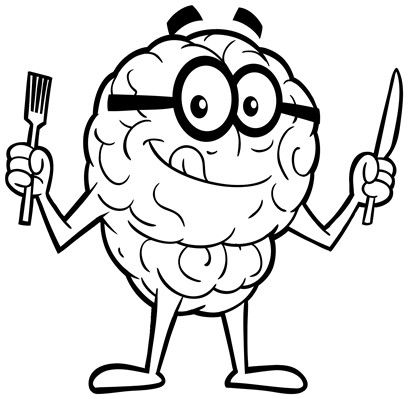 Eating quickly means that a tremendous amount of food may be wolfed down within a short space of time. Minimize foods with empty calories, meaning most of the nutrition has been removed. These include sugar, white flour products, refined and processed foods, and alcohol—all of which can contribute to weight gain. Excessive consumption of sugar can lead to health problems, like those resulting from excessive consumption of alcohol.
Eating quickly means that a tremendous amount of food may be wolfed down within a short space of time. Minimize foods with empty calories, meaning most of the nutrition has been removed. These include sugar, white flour products, refined and processed foods, and alcohol—all of which can contribute to weight gain. Excessive consumption of sugar can lead to health problems, like those resulting from excessive consumption of alcohol. -
Drink a glass of water 20-30 minutes before each meal. Another benefit can be a reduction in the amount of food ingested because if you are thirsty as well as hungry, you can eat trying to quench thirst—because you did not even know the difference.
 If there are babies and small children in the home, offer them water when they become fussy. Dehydration can trigger irritability and fatigue. If this does not suffice, then give them food. This process helps train the brain to recognize thirst versus hunger. Many adults eat for both hunger and thirst, having never learned to differentiate between the two growing up.
If there are babies and small children in the home, offer them water when they become fussy. Dehydration can trigger irritability and fatigue. If this does not suffice, then give them food. This process helps train the brain to recognize thirst versus hunger. Many adults eat for both hunger and thirst, having never learned to differentiate between the two growing up. -
Both brain and body perform most effectively with appropriate amounts of high-quality nutrition. Be wise to energize! Consider these tips:
- Read labels carefully and avoid high-sugar, high-salt, high-fat, hydrogenated, and trans fats. Also, additives ending in ate (e.g., monosodium glutamate).
To eat is a necessity, but to eat intelligently is an art.
—La Rouchefoucald- The longer the list of ingredients, the more likely that the food is lower quality and filled with preservatives to enhance shelf-life.
- Move toward a plant-based menu of unrefined, and unprocessed food.
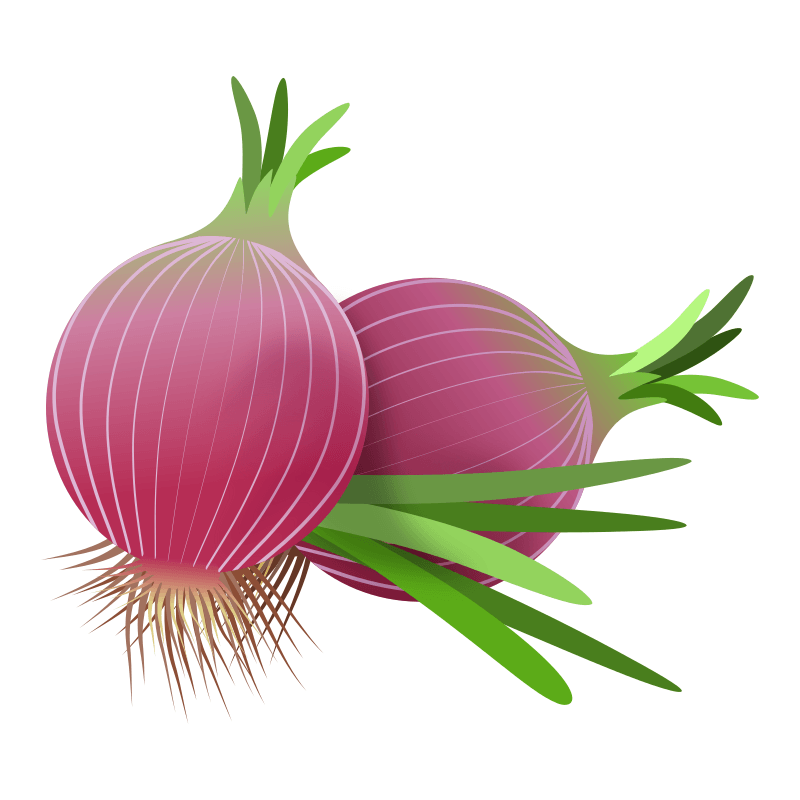
- Practice appropriate and informed portion control. Eating slowly and chewing your food well can help with this goal.
- Avoid colas (regular or diet), fruit juices, and sugary drinks. Minimize alcohol intake with its “empty calories.”
- Rotate bites of food to maintain flavor intensity. If you choose a dessert, eat only two or three bites. After that, you are eating primarily from taste-bud memory.
- Choose nutritious calories; minimize chew-less foods in favor of chewy ones (e.g., berries and other whole fruit, celery, carrot sticks); dump snacking and implement regular
- Make water your “beverage of. choice,” as it is absorbed quickly and needs no digestion. Drink a glass of water 20-30 minutes before each meal.
- Read labels carefully and avoid high-sugar, high-salt, high-fat, hydrogenated, and trans fats. Also, additives ending in ate (e.g., monosodium glutamate).
- Fasting can be positive or negative. For the average person, long fasts can be unhealthy. However, intermittent fasting is touted as beneficial for many.
If you do heavy, physical work, it likely is not a good idea unless you do a bit of fasting on your days off. For example, if you eat breakfast at 8:00 a.m., lunch at noon, and your last meal before 6:00 p.m.—and drink only water between then and when you “break-fast” the next day—you will have fasted for 13-14 hours. Alternatively, some choose to eat just two meals a day on weekends or skip dinner altogether once or twice a week. If you try this, select a wise option that works for your brain, body, and schedule, carefully avoiding excess fasting.The first wealth is health.
—Ralph Waldo Emerson
The doctors of the future will no longer treat the human frame with drugs, but rather will cure and prevent disease with nutrition.
—Thomas Alva Edison
Reminder: Drink a glass of water as you dig into this last section. How are you choosing to apply this information practically in your everyday life?
Think & Do
- Do you “break-fast” each day with some healthy carbs for your brain and ingest most of your calories before 4:00 pm each day?
Most people burn fewer calories by evening so eating heavy meals or snacking late in the evening can easily contribute both to restless sleep (as the GI system keeps working) and to weight gain because the calories are not being used.
Ingesting 3,500 unneeded calories can result in a gain of a pound—often around the middle and thighs. By the same token, expending 3,500 calories can help you drop a pound. Simply reducing your caloric intake by even 100 calories per day can reduce your weight by a pound each month.You are what you eat. What would you like to be?
—Julie Murphy
- Do you avoid snacking or limit snacks to healthy choices when you are physiologically hungry?
 First, remove everything from your home that you no longer wish to eat. (Less temptation!) When you crave a snack, drink a big glass of water, and see if you are hungry thirty minutes later or simply in the habit of snacking or your brain is asking for some emotional eating (self-medication).
First, remove everything from your home that you no longer wish to eat. (Less temptation!) When you crave a snack, drink a big glass of water, and see if you are hungry thirty minutes later or simply in the habit of snacking or your brain is asking for some emotional eating (self-medication).
- Do you avoid sweetened juice drinks and sodas of any type?
Figure out how much you need to exercise to work off the calories in a specific beverage. Most processed foods must list the number of calories in one serving. An article in the American Journal of Public Health revealed that those who identified the number of minutes they must exercise to burn off even one soda drank less of it overall. Make water your beverage of choice.
Most processed foods must list the number of calories in one serving. An article in the American Journal of Public Health revealed that those who identified the number of minutes they must exercise to burn off even one soda drank less of it overall. Make water your beverage of choice.
- Are you leaning toward a plant-based menu?
More and more researchers are recommending moving toward a plant-based menu for health and longevity. If you are concerned about protectingCooking at home with fresh ingredients means you know what is going into your food.
—Joe Wicks Planet Earth—to say nothing of reducing your risk for colon cancer and other cancers—going this route can be a two-for-one. What you put into your body in terms of foods and beverages will return in quality of brain and body function and is linked with not only high-level-wellness but also longevity.
Planet Earth—to say nothing of reducing your risk for colon cancer and other cancers—going this route can be a two-for-one. What you put into your body in terms of foods and beverages will return in quality of brain and body function and is linked with not only high-level-wellness but also longevity.  You must decide between short-term “taste treats” (as you define them) and the long-term “treat” of better health, prevention of obesity and diseases linked with it, and a potentially increased life span. Eating wisely will not only help you be wiser: it is the wise thing to do.
You must decide between short-term “taste treats” (as you define them) and the long-term “treat” of better health, prevention of obesity and diseases linked with it, and a potentially increased life span. Eating wisely will not only help you be wiser: it is the wise thing to do.
Absolutely anything that you potentially stand to be as a human being stems from nutrition, end of story.
—Topaz Page-Green
Slow & Steady Wins
 Concentrate on Module 8 during this entire week. Do your Daily Goals; reread the sections; relisten to the Videos and audiobook excerpts. It takes the average adult four times through to really absorb the material and turn it into a new behavior. If you want positive results, rushing through the material just because you can, may not provide the desired outcome.
Concentrate on Module 8 during this entire week. Do your Daily Goals; reread the sections; relisten to the Videos and audiobook excerpts. It takes the average adult four times through to really absorb the material and turn it into a new behavior. If you want positive results, rushing through the material just because you can, may not provide the desired outcome.
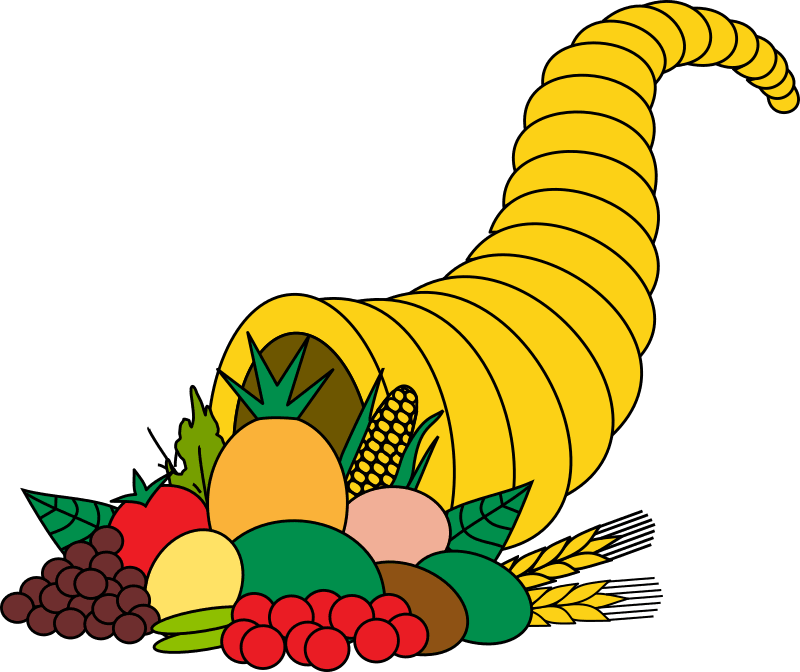 Practice, practice, practice choosing quality nutrition. Get plenty of sleep so your brain has time to consolidate or transfer what you are learning from short term to long term memory. Drink plenty of water to keep your brain hydrated and able to generate the mental energy you need.
Practice, practice, practice choosing quality nutrition. Get plenty of sleep so your brain has time to consolidate or transfer what you are learning from short term to long term memory. Drink plenty of water to keep your brain hydrated and able to generate the mental energy you need.
| Do the best you can until you know better. Then when you know better, do better. —Maya Angelou |
Read labels—especially of any refined or processed foods and avoid those with additives ending in ‘ate,’ or that contain hydrogenated fats or high fructose corn syrup or trans fat.  Think carefully about your choice of animal products and the immense suffering of those creatures both during life and at time of death. Each person will need to make a personal decision.
Think carefully about your choice of animal products and the immense suffering of those creatures both during life and at time of death. Each person will need to make a personal decision.
Those who think they have no time for healthy eating, will sooner or later have to find time for illness.
—Edward Stanley
 See you next week for LLM Online Module 9
See you next week for LLM Online Module 9
Topic:
Laughter—Laugh and Last
Lesson List
- Module 2 – Emotional Intelligence (EQ)
- Module 2 – To Begin
- Module 2 – Slow & Steady Wins
- Module 1 – Mindset and Self-talk
- Module 1 – To Begin
- Module 1 – Slow & Steady Wins
- Module 1 – Mindset (educational video)
- Module 1 – Birds & Brains (video)
- Module 1 – Just the Facts - Chapter 1 (audio)
- Module 1 – Just the Facts - Chapter 2 (audio)
- Module 2 – EQ (Emotional Intelligence) (video)
- Module 2 – Just the Facts - Chapter 3 (audio)
- Module 4 – Sleep
- Module 4 – To Begin
- Module 4 – Slow & Steady Wins
- Module 3 – Mental & Physical Exercise
- Module 3 – To Begin
- Module 3 – Slow & Steady Wins
- Module 5 – Water
- Module 5 – To Begin
- Module 5 – Slow & Steady Wins
- Module 6 – Safety
- Module 6 – To Begin
- Module 6 – Slow & Steady Wins
- Module 7 – Sunlight
- Module 7 – To Begin
- Module 7 – Slow & Steady Wins
- Module 8 – Nutrition
- Module 8 – To Begin
- Module 8 – Slow & Steady Wins
- Module 10 – Support Network
- Module 10 – To Begin
- Module 11 – Stressors
- Module 10 – Slow & Steady Wins
- Module 9 – Laughter
- Module 9 – To Begin
- Module 11 – To Begin
- Module 9 – Slow & Steady Wins
- Module 11 – Slow & Steady Wins
- Module 12 – Life Satisfaction
- Module 12 – To Begin
- Module 12 – Slow & Steady Wins
- Module 2 — Birds & Brains, No. 2 - EQ (video)
- Module 3 – Exercise (educational video)
- Module 3 – Just the Facts - Chapter 4 (audio)
- Module 3 – Just the Facts - Chapter 5 (audio)
- Module 3 – Birds & Brains, No. 3 - Exercise (video)
- Module 4—Just the Facts - Ch. 6 (audio)
- Module 4—Birds & Brains #4 (video)
- Module 4—Sleep (educational video)
- Module 5—Water (educational video)
- Module 5 – Just the Facts - Chapter 7 (audio)
- Module 5 — Birds & Brains #5 (video)
- Module 6 – Safety (educational video)
- Module 6 – Just the Facts - Chapter 8 (audio)
- Module 7 – Birds & Brains #7 (video)
- Module 8 – Just the Facts - Chapter 10 (audio)
- Module 8 – Nutrition (educational video)
- Module 8 – Birds & Brains #8 (video)
- Module 7 – Just the Facts - Chapter 9 (audio)
- Module 6 — Birds & Brains #6 (video)
- Module 7 – Sunlight (educational video)
- Module 9 – Laughter (educational video)
- Module 9 – Just the Facts - Chapter 11 (audio)
- Module 9 – Birds & Brains #9 (video)
- Module 10 – Support Systems (educational video)
- Module 10 – Just the Facts - Chapter 12 (audio)
- Module 10 – Birds & Brains, No. 10 - Support Systems (video)
- Module 11 – Stressors (educational video)
- Module 11 – Just the Facts - Chapter 13 (audio)
- Module 11 – Birds & Brains No. 11 - Stressors (video)
- More Information
- Module 12 – Life Satisfaction (educational video)
- Module 12 – Birds & Brains, No. 12 - Life Satisfaction (video)
- Module 12 – Just the Facts - Chapter 14 (audio)
Teachers Info

Arlene R. Taylor, PhD
- Specialist:
- Website: https://www.arlenetaylor.org/
-
Arlene R. Taylor PhD, a leading speaker on brain function, is sometimes referred to as the brain guru. She specializes in simplifying this complex topic, with the goal of helping individuals understand more about the brain in general and their own in particular. She delights in helping others learn how to thrive by...

